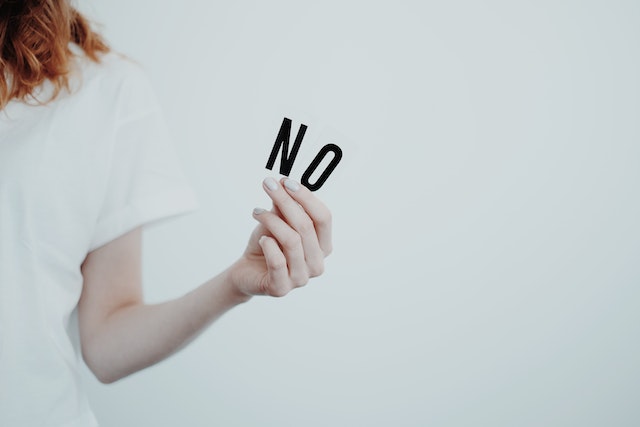Someone is asking you for something. And you feel like if you decline and say no, they will despise you forever. So you end up saying yes.
You are a ‘yes’ person, like most of us. You say yes to helping friends in babysitting or to co-workers finishing their projects, even if that means piling extra work hours on your schedule. You say yes to invites and parties even though you know you have neither the time nor the energy to be truly present there.
The result – less time for yourself and even lesser for things you actually want to do.
This ‘yes’ habit can lead to an awfully vicious stress cycle and even affect your productivity at work and in your personal life. Your relationship begins to suffer as a result, and suddenly everything starts going downhill.
The solution – learning how to say no.
In this post, we will dive deeper into the most effective tips on how to say no without being disrespectful or feeling guilty. So if you are struggling to break your ‘yes’ habit or simply looking to be more assertive in your communication, this is the perfect place to get started.

How To Say No?
1. Notice The Amount of No’s Around You.
When you say no to someone, and they get angry at you, it leaves a deep imprint in your mind. But the thing is that people say no to stuff all the time and do not suffer any consequences. The heavens don’t fall, and the Earth doesn’t stop rotating. The person who puts forward the request just shrugs and just says, ‘Yeah, fine.’
But we conveniently forget all these times and remember the one time someone got angry at your ‘no’ and vowed never to speak to you again.
Therefore, one of the best tips on how to say no is to understand how commonly people say it to each other around you without making it a big deal. Now, remember this when it’s your turn to say no the next time.
2. Understand The Implications Of Saying Yes.
You normally say yes to things because they take minimal effort from you, right?
But these small things eventually pile up to become huge burdens.
So the next time someone asks you for something, think about the implications of saying both yes and no. Think of what would happen if you said yes in the long term.
The thing is, you have to understand that your time and energy are precious, and you have to choose where you spend them. So if you genuinely want to say yes, it’s great. But if you are only saying it due to your limiting beliefs and inability to say no, think again.
Read more: The Art Of Choosing – 3 Different Types Of Decision-Making
3. Provide A Brief But True Explanation To Your No.
If the request comes from a dear friend, family member, or colleague, they deserve to know the reason behind your no. So, don’t get overly emotional, and do not lie, either. Just briefly explain why you are saying no, like you have work or a family emergency or are just exhausted.
Learning how to say no with the power to give a genuine explanation will help people understand you. If you don’t give them an explanation, it might sound rude, or they might believe that you don’t care.
Read more: 5 Tips On How To Stay Focused In A World Full Of Distractions
4. Remember That It’s Okay To Feel Guilty.
Right after saying no, you might feel guilty, and that’s completely okay. But you don’t have to act on that emotion immediately. Just sit with it for a while. When you sit with your emotion and try to understand or assess where it is coming from, it eventually loses steam and stops affecting you that much. This way, it is much easier to move on from it.
Conclusion:
Learning how to say no is tough. We hope these tips will help you help get started slowly. Now, using these tips on your boss, best friends, or close family members might sound like a lot. So don’t. But the next time some random stranger bugs you to fill out a form or buy something, practice them. These low-stakes situations can teach you a lot about saying no in high-stakes places.
Another effective way to say no is to be more decisive in your choices. To learn more about how to be decisive, click here.
To continue learning about mental health, subscribe to Your Mental Health Pal.

